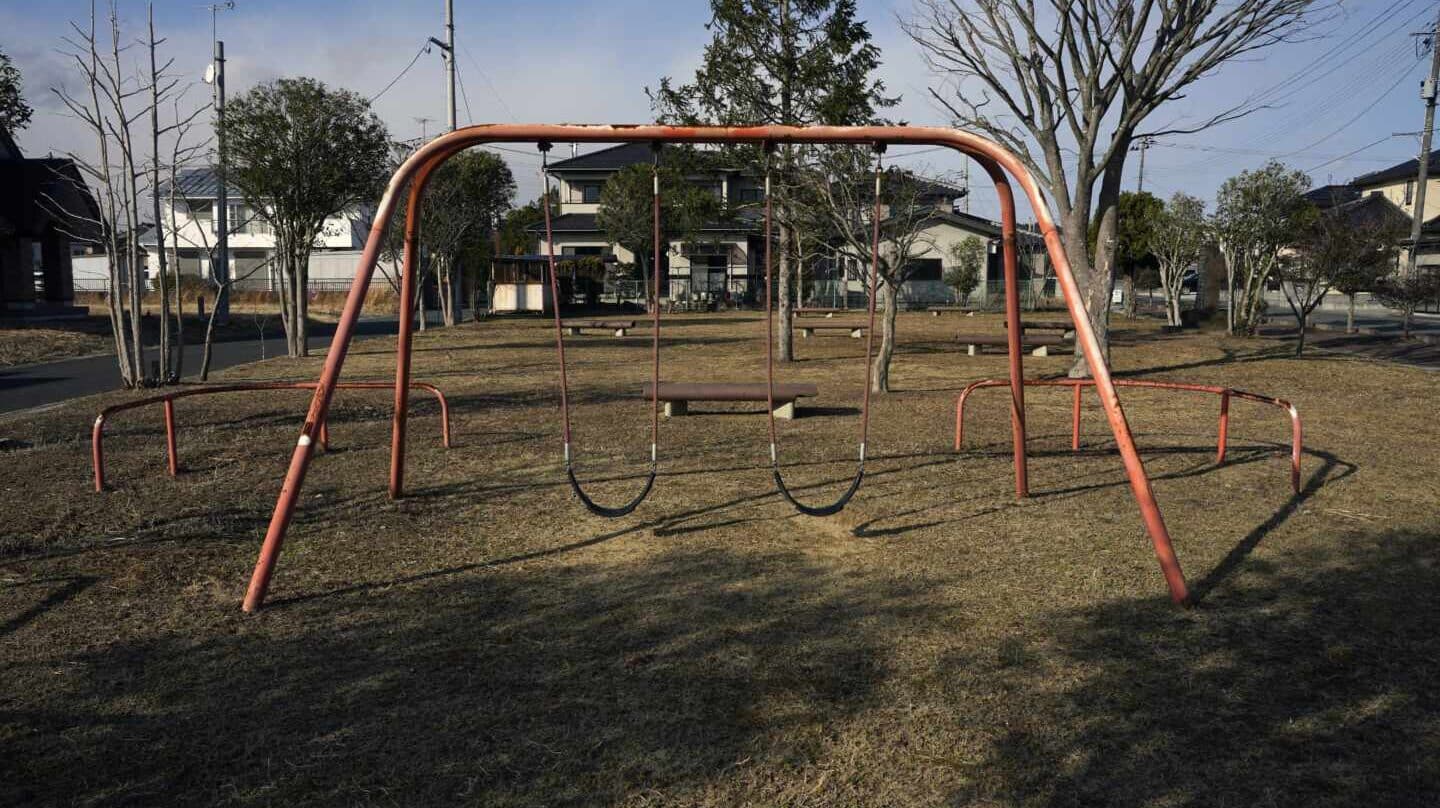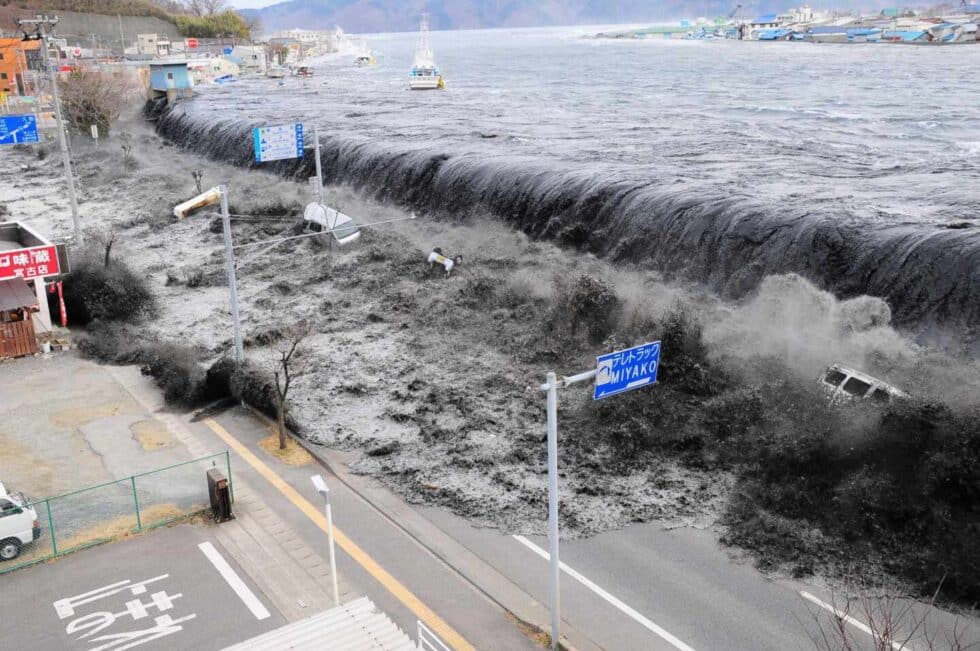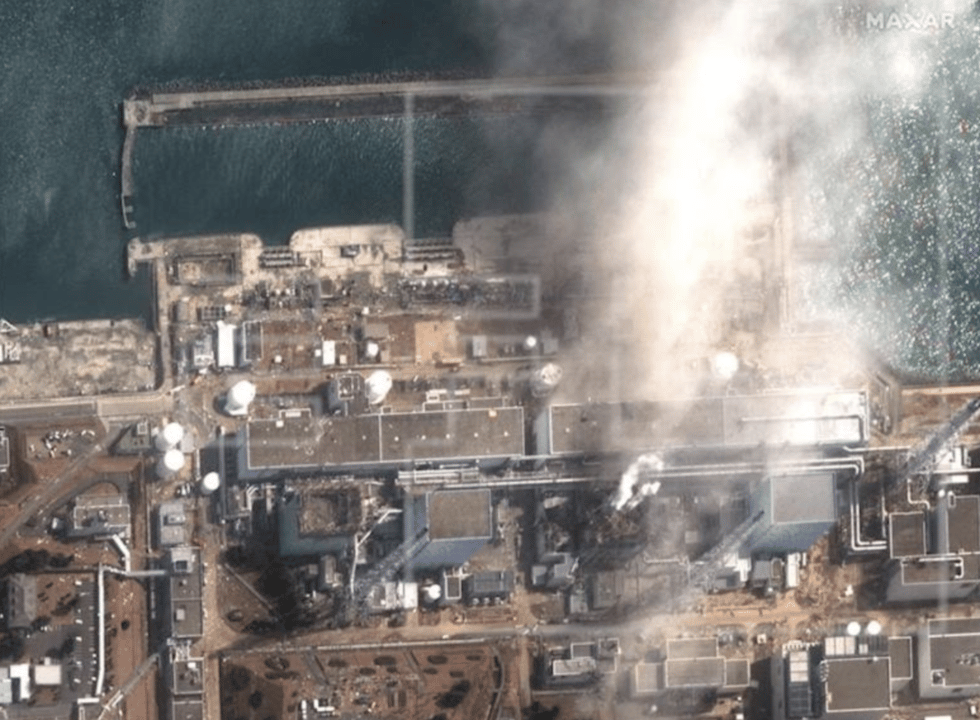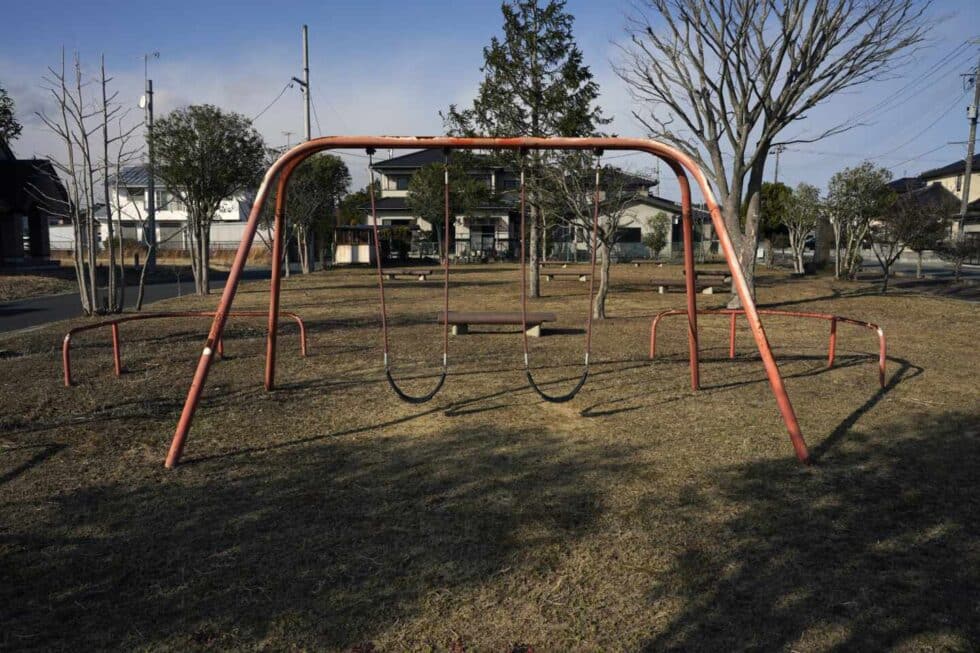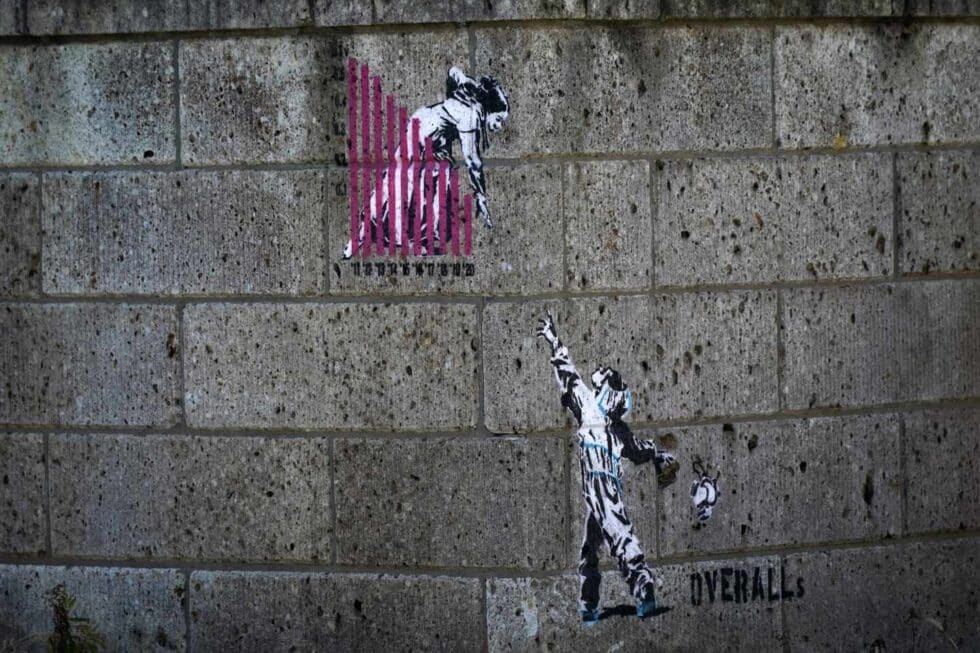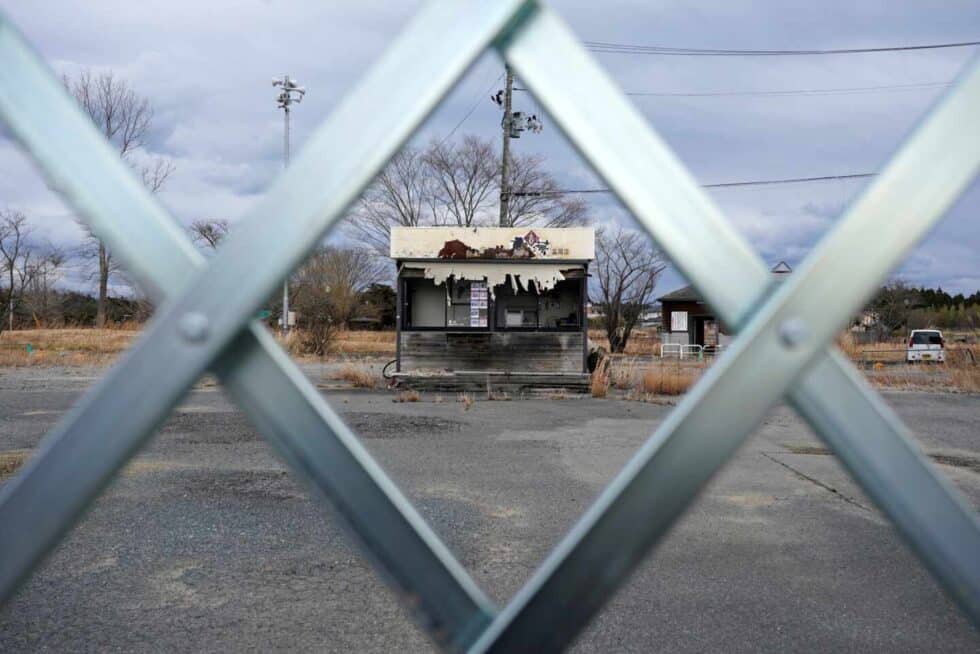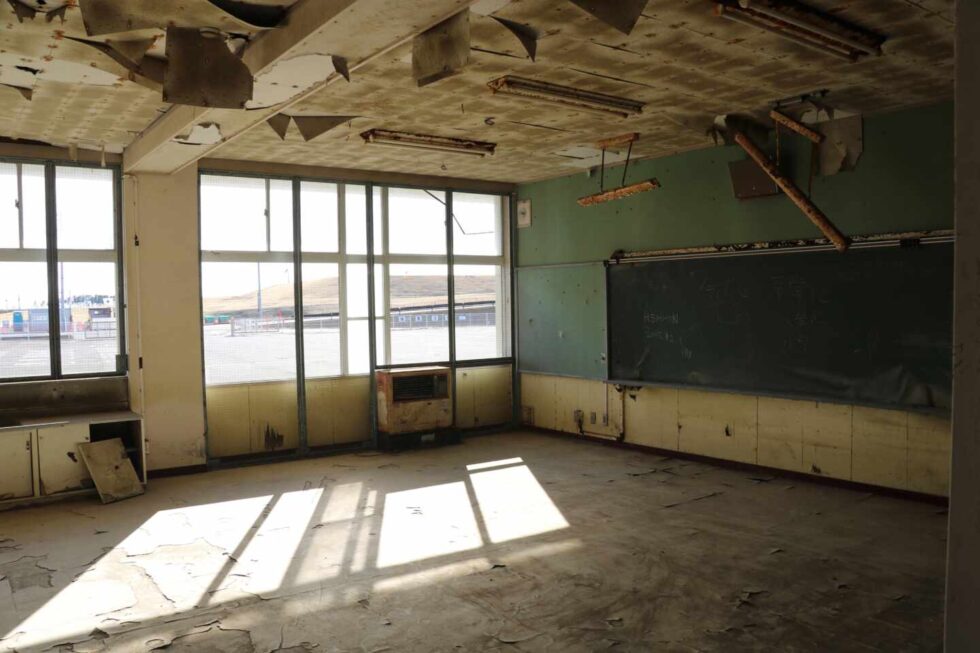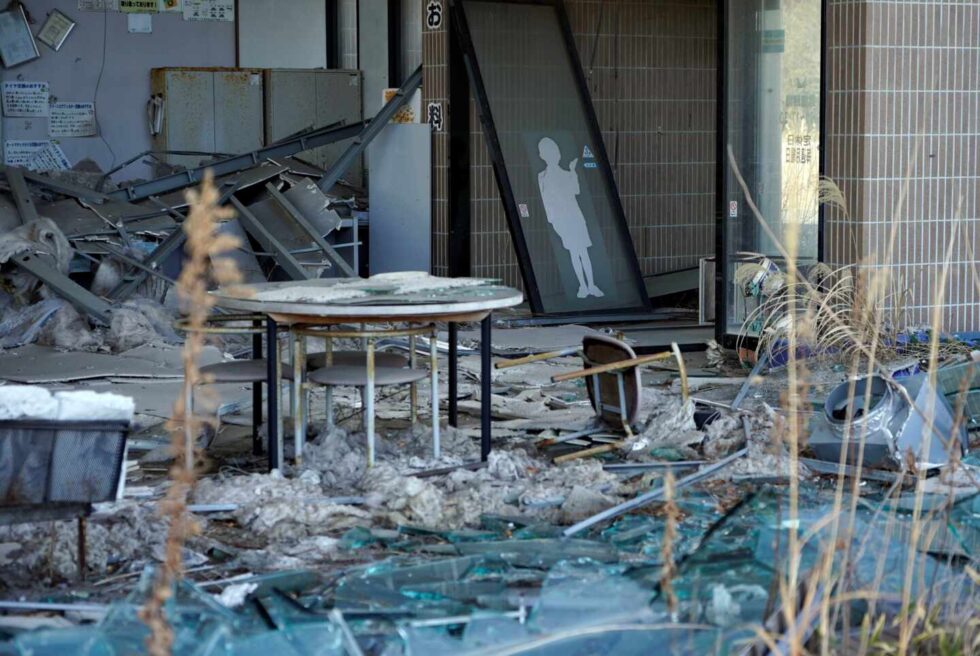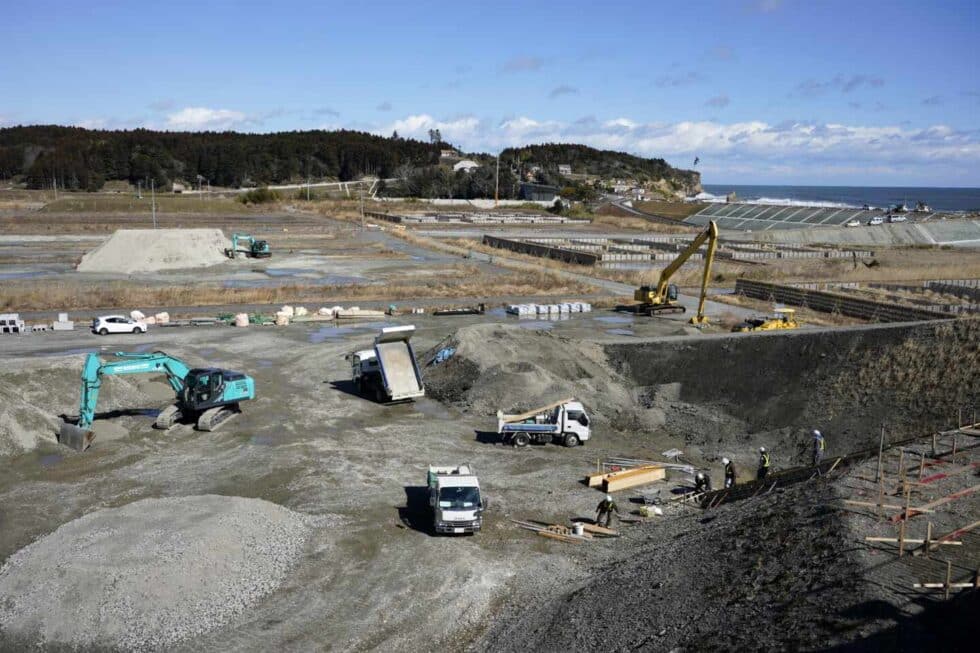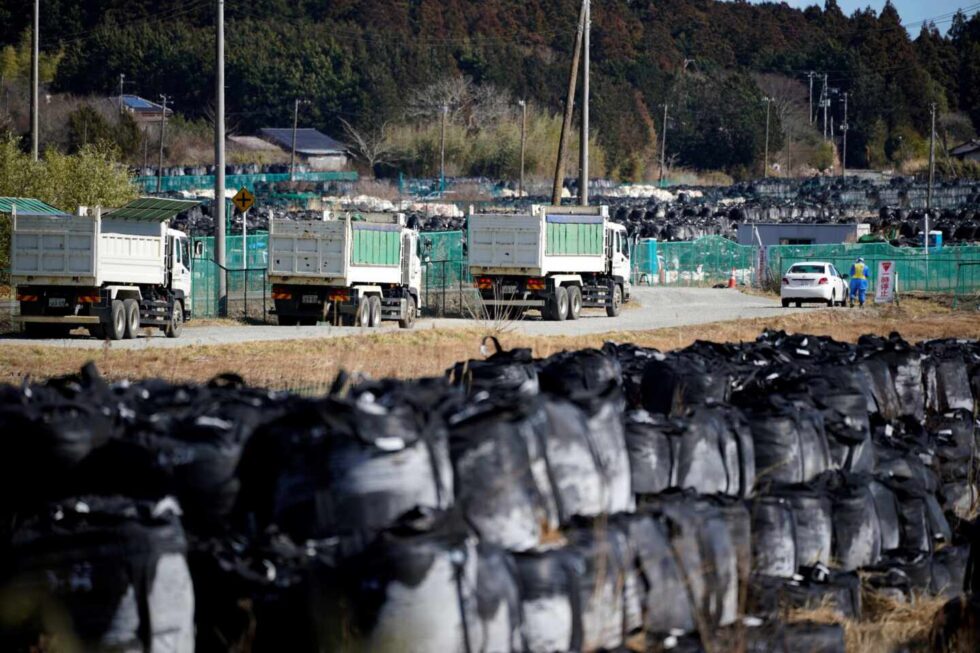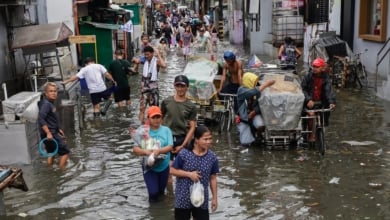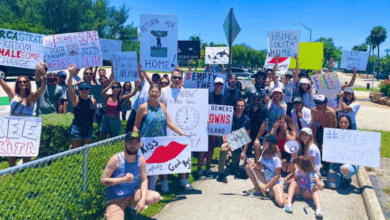Era un viernes cuando la Tierra vibró frente a las costas de Japón. Más de cinco minutos de terremoto en Fukushima aquel 11 de marzo de 2011. Un 9,0 en la escala de Richter, una de las mayores sacudidas que se han registrado jamás. Desencadenó un efecto dominó tremendo: el terremoto generó un tsunami y éste provocó un desastre nuclear cuando embistió la central nuclear de Daiichi.
Murieron casi 18.000 personas y hubo unos 2.000 cadáveres que nunca aparecieron por el terremoto y el tsunami. Además, más de 160.000 personas fueron evacuadas de la prefectura de Fukushima por el accidente nuclear.
Diez años después, 36.000 todavía no han regresado. Hay lugares que se convirtieron en pueblos fantasma desde entonces. Zonas declaradas "prohibidas" por el Gobierno japonés por los altos índices de radioactividad.
La ola del tsunami arrasó la costa noreste de Japón
El terremoto, provocado por el desplazamiento de dos placas, comenzó a las 14:46 a 130 kilómetros de la costa japonesa y a una profundidad de 32 kilómetros. En las horas posteriores se produjeron decenas de réplicas.
Tras el temblor, llegó el tsunami. Menos de una hora después del terremoto llegaron las primeras olas a la costa noreste de Japón. El agua arrasó con todo en las ciudades costeras.
La central nuclear de Daiichi tras el accidente nuclear
En la central de Daiichi, una de las más importantes del mundo en ese momento, había tres reactores nucleares activos cuando se produjo el terremoto. El agua del tsunami superó el muro de contención y prrodujo tres fusiones nucleares, tres explosiones de hidrógeno y la liberación de contaminación radiactiva.
Columpios abandonados
En la ciudad de Namie, a puñado de kilómetros de la central nuclear, viven apenas 1.500 personas. En 2011, cuando ocurrió la catástrofe, la población era de más de 20.000
Un grafiti pintado en las calles de Futaba, ciudad cercana a la central nuclear
El tsunami arrasó casi 450 kilómetros cuadrados de superficie y el agua se adentró hasta 40 kilómetros en el interior del país.
La zona de exclusión
El accidente nuclear obligó a las autoridades a evacuar localidades enteras y algunas siguen prácticamente deshabitadas. En la imagen, un puesto de comida abandonado en Tomioka.
El colegio que salvó a 320 personas del tsunami
Este colegio de Arahama, en Sendai, sirvió de refugio para salvar a 320 alumnos, profesores y otras personas del tsunami. Hoy sigue en pie por su respuesta ejemplar ante una catástrofe de esas proporciones.
Huellas intactas
Algunos lugares siguen igual que hace diez años. Nadie ha tocado nada, nadie ha recogido un cristal. En la imagen, un negocio de coches en la ciudad de Tomioka.
Un muro de contención más grande
Tomioka se llevó la peor parte: además se estar pegada a la central de Daiichi, es una localidad costera, por lo que el Tsunami arrasó con todo. En la imagen, operarios trabajan en la reconstrucción de la zona detrás de un muro de contención.
Residuos nucleares
Varios caminos transportan residuos nucleares en Naime, muy cerca de la central de Daiichi. Diez años después, todavía continúan los trabajos de descontaminación.
